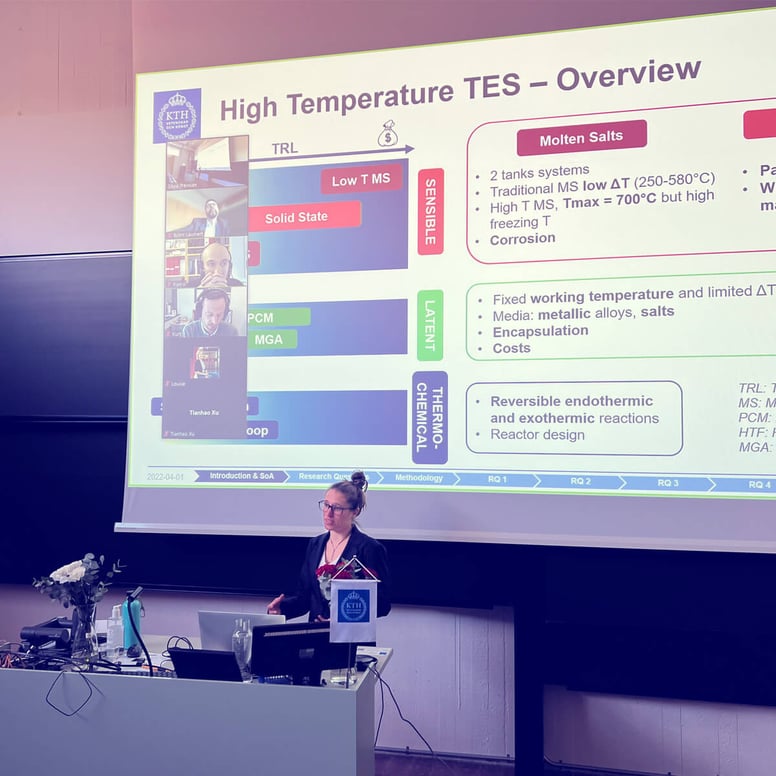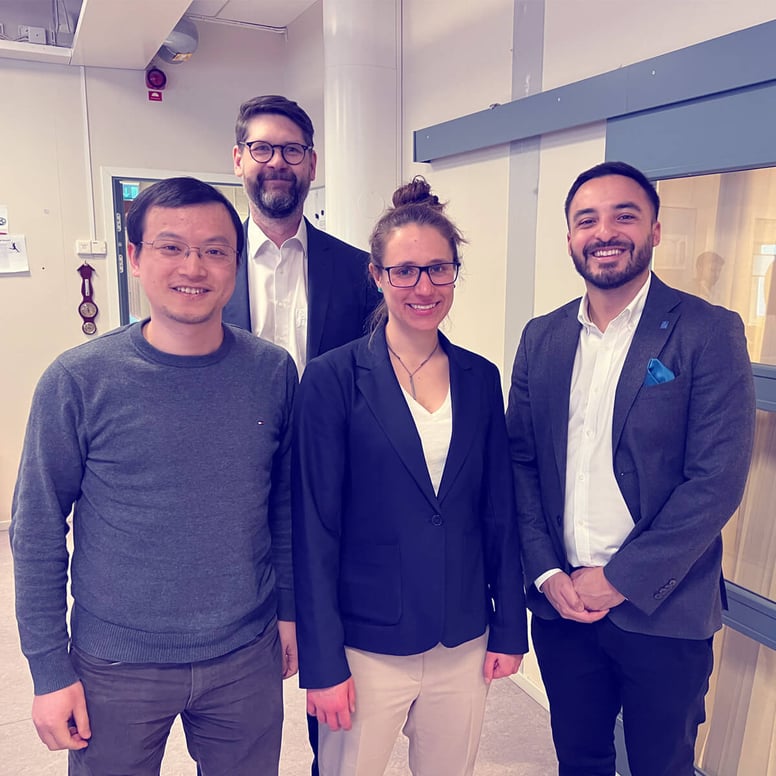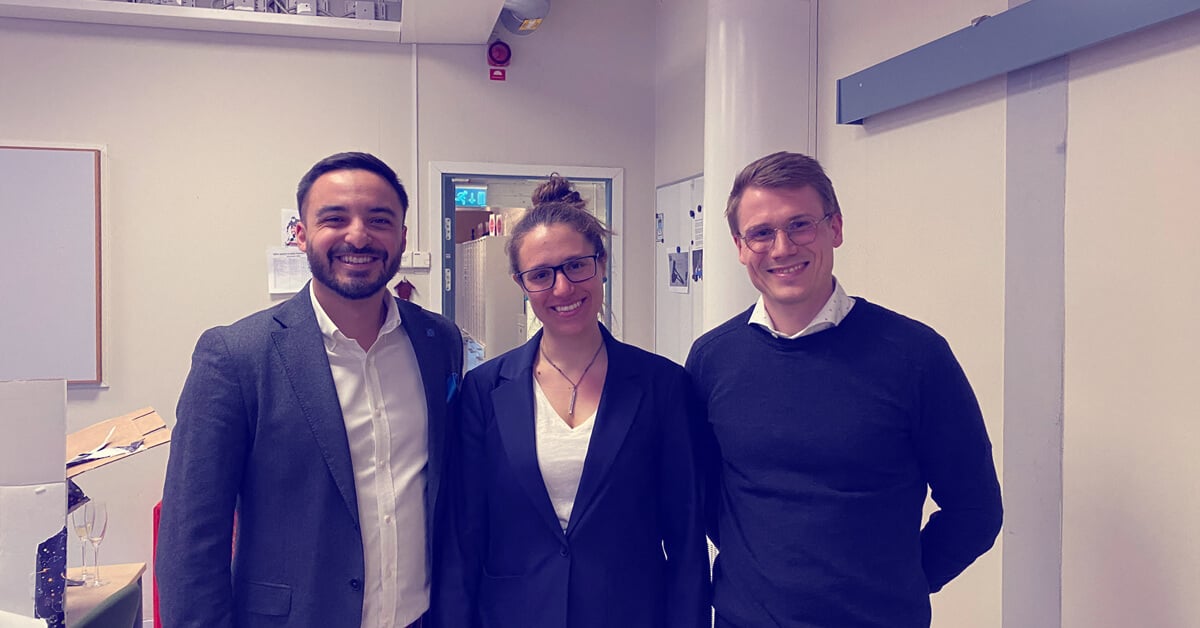A chat and an ice-cream shared between a researcher, Silvia Trevisan and Kyoto's CTO – at the campus of one of the world's best Tech-Universities, KTH – has evolved into a one year funding for a “battery driven” post-doc collaboration.
“To become the best in the world, you have to work with the best,” says Bjarke Buchbjerg (33), CTO at Kyoto Group.
About one year ago he stumbled across an article written by Rafael Guédez, a whip-smart Venezuelan lecturer running a team of young PhD students at one of the best universities in the world for technology and energy systems: KTH, Royal Institute of Technology in Stockholm. Rafael Guédez's article centred around capturing and storing energy with molten salt, smack in the middle of Kyoto's interest field.
Buchbjerg explains:
“Immediately, I picked up the phone and humbly asked if I could come for a visit, and Rafael immediately said yes.”

The PhD-student who made a “Mini-Heatcube”
Not only did Rafael Guédez say yes. Last fall, the lecturer arranged a visit for Kyoto's CTO, introducing his research team, his lab and the yellow-leafed old campus – looking a bit like a scene from the movie 'Good Will Hunting'.
“Industries requiring heat are facing a big challenge linked to the need for decarbonizing their processes, but it also comes with new opportunities to emerge as leaders in their sector. The use of fossil fuels not only has a negative impact on climate change, and thus in meeting the respective sustainability targets of the industries, but it also means a larger dependency on the supplier and therefore uncertainty in the business model. We see that for instance with the current geopolitical situation” says Rafael Guédez, Senior Researcher and Lecturer at KTH.
“At KTH, we understand that the sooner these industries transition to integrating renewable energies and energy storage – like Kyoto's HeatCube – in their processes, the more robust their business will be in the future and the greater they will contribute towards the green transition and our climate goal targets”, added Guédez
Guédez was especially keen on arranging a longer chat between Buchbjerg and the Italian student Silvia Trevisan – who, during her recent PhD studies, designed, produced and tested her own proto-type of a thermal energy storage application, not unlike Kyoto's Heatcube.
“Silvia is smart and talented, and because of her invention, we just had to work with her to see how together we could develop the best possible storage application for our future clients,” says Buchbjerg. “The people at KTH are part of the best in the world for energy technology and new innovations, especially using molten salt.”
“That is why Kyoto is proud to say that we will fund one year of Silvia’s post-doc, starting July 1st, 2022. This project will be called RIHOND (Renewable Industrial Heat on Demand),” Buchbjerg explains.

Collaborating on the future of thermal energy storage
The exciting “Scale-up + Science” collaboration is a first for Kyoto Group and means they now have an in-house Dr.philos. from KTH – a school known as the cradle of engineers in Europe. But what will Silvia be doing exactly?
“Silvia now has the title PhD and will continue to research and drive further material development of the Kyoto Group’s thermal battery technology. We are committed to making batteries that deliver heat directly to the industry,” Buchbjerg says.
And how does collaborating with KTH in Stockholm contribute?
“They help us become the best. The thermal battery industry is still young, with only a few companies working on this type of technology. Therefore, for Kyoto to become the best, we need to collaborate with the best, like KTH and Silvia.” Buchbjerg concludes.


